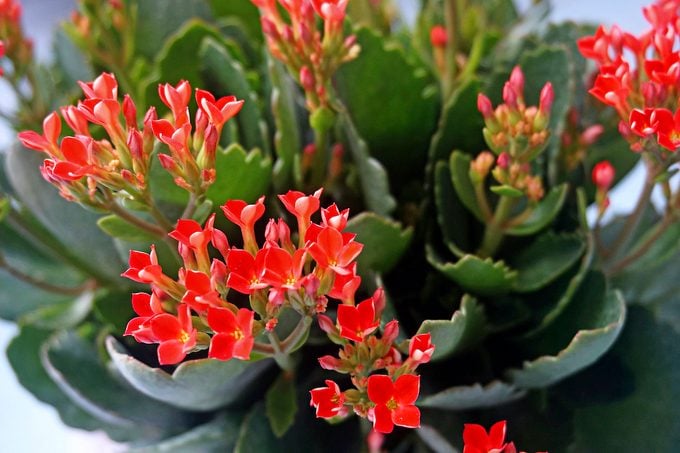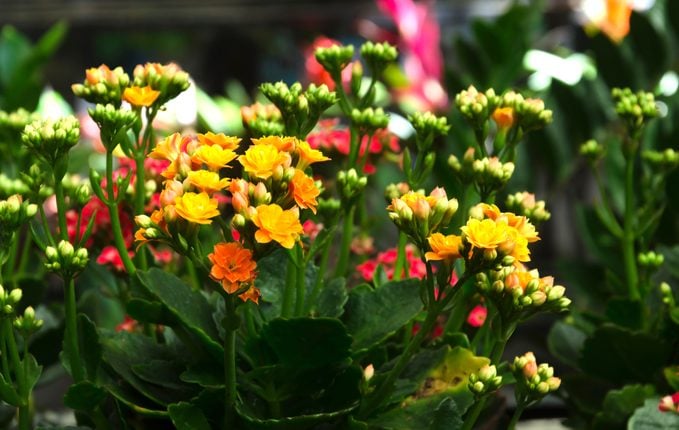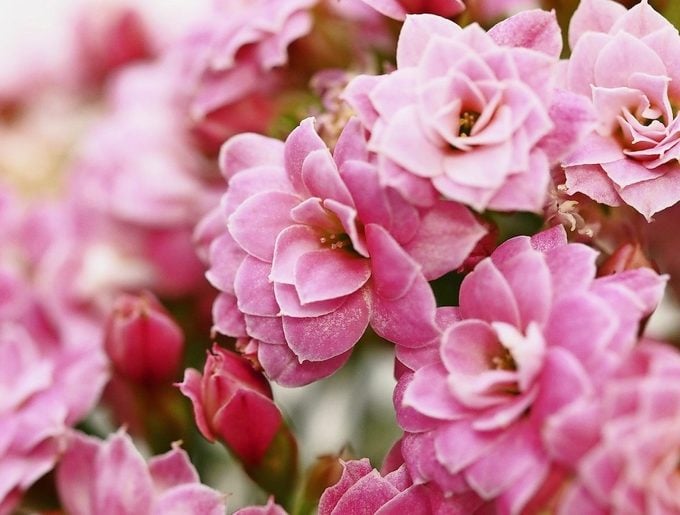How to Grow and Care for Kalanchoe, Indoors and Outdoors
Updated: Jun. 07, 2022
A popular succulent, kalanchoe boasts long-lasting flowers and interesting foliage. Get tips for kalanchoe care and re-blooming.

Kalanchoe is popular with gardeners for a variety of reasons. Houseplant growers enjoy this succulent for its long-lasting brilliant red, pink, orange or white bloom heads that appear above the waxy green leaves in the cold of winter. That’s when we need colorful flowers the most! Those in warmer climates appreciate its drought-tolerance, making it great in rock gardens and xeriscaping. Growing kalanchoe is pretty easy, but there are a few tips that will make it even easier. Here’s what you need to know before you grow this plant.
Kalanchoe Pronunciation and Plant History

First up: How to pronounce this troublesome plant name! The Botanary at Dave’s Garden says it’s “kal-un-KOH-ee,” and also notes that the name comes from the Chinese for one of the species.
There are over 125 species in this genus, but the one you’re most likely to come across in grocery store florist departments or houseplant nurseries is Kalanchoe blossfeldiana. It’s native to Madagascar and was brought to the rest of the world in 1932 by the botanist Robert Blossfeld. Due to its extreme cold sensitivity, kalanchoe is best-suited as a houseplant in most climates and has become a very popular one.
Learn how to grow and care for Haworthia succulents.
Kalanchoe Care

- Botanical name: Kalanchoe blossfeldiana
- Zones: 10-12
- Light needs: Full sun, as well as 14 hours of darkness for re-blooming
- Soil: Well draining
Kalanchoe is fairly easy to grow indoors when placed in the right conditions. It grows 12 inches wide by 18 inches tall and needs a temperature of between 60 – 85 degrees F. Low humidity and four hours of direct sunlight — as well as 14 hours of darkness for 6 to 11 weeks — are musts, too. Be sure to place it in well-draining soil; over-watering or letting it sit in wet soil can cause root rot. Like other succulents, an occasional, thorough watering is all it requires.
The plants are usually sold in the winter or early spring, while in their natural bloom cycle. The flowers are long-lasting, but once they fade, you can trim the heads to better enjoy the succulent foliage. Lots of bright sunlight will keep this plant healthy throughout the summer months, whether it’s growing indoors or out.
Kalanchoe is fun to share with friends, as it grows well from cuttings and sometimes even sets new buds on the edges of the leaves. With the wide array of kalanchoe colors and flowers available, you can start a collection of free plants in no time at all.
We found 12 perfectly pink succulents for your home.
Help the Flowers Re-Bloom
One of the more challenging parts of growing kalanchoe can be getting it to re-bloom. Kalanchoe is what’s known as a short-day plant, meaning it needs extended periods of complete darkness to form buds. (Poinsettias and Christmas cactus are also short-day plants.) If you’re growing it outdoors (in zones 10 to 12), the natural day-night cycle will take care of this for you. Look for buds to start forming in winter and early spring.
When growing kalanchoe as a houseplant, you may have to help it along. If the room where you keep it experiences a lot of artificial light in the evenings, change the location to allow a more natural light cycle in the fall, until the buds appear.
Next, discover 7 surprising facts about succulents.
